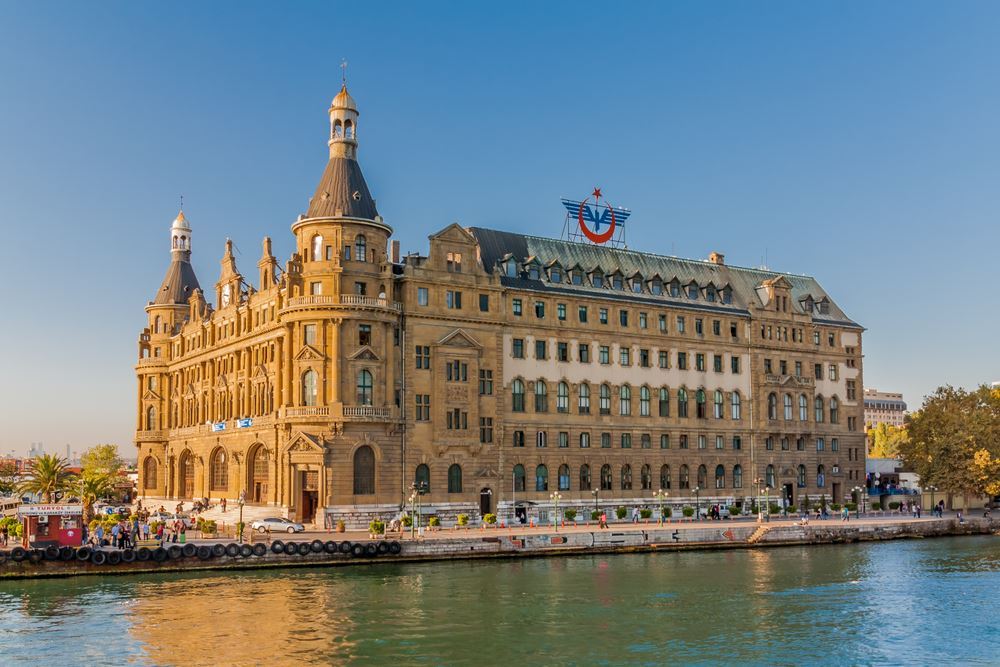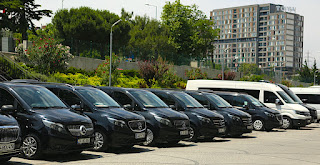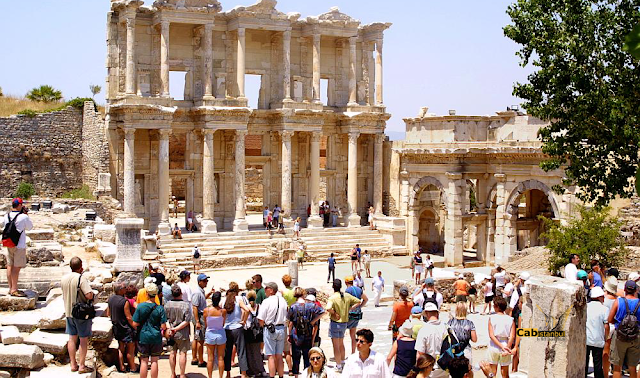İstanbul Transportaion
Transportation İn İstanbul
Istanbul's motorways network is strong. In 2019, the toll highway of Istanbul Province is 500 km and the motorway network is approximately 300 km, with a total of 800 km of highways excluding secondary roads and side streets. The density of the expressway network is simply too much. The forms the city's inner circumferential, traversing the primary Bosphorus Bridge, and therefore the is that the city's outer road, crossing the Fatih Sultan Mehmet Bridge.
The highway continues west to Edirne and also continues east to Ankara. In 2011, the primary and second bridges on the Bosphorus carried 400,000 cars daily. The Kuzey Marmara Highway may be a motorway that bypasses Istanbul to the north. The motorway from Kinali Toll booths to Istanbul Park Service has 139 km, with 8 lanes. the finished section of the highway crosses the Bosphorus Strait via the Yavuz Sultan Selim Bridge (last Bosphorus Bridge), which entered service on 26 August 2016. The highway connecting Ataturk Airport to New Istanbul Airport. Environmentalists used to worry that the third bridge will put in danger the remaining green areas to the north of Istanbul, they were right. (İstanbul is completely in danger and about environments). Except for the three Bosphorus Bridges, the dual-deck, 14-kilometer Eurasia Tunnel under the Bosphorus strait also provides road crossings for motorcars between the Asian and European sides of Turkey.
Istanbul's nostalgic and modern tram systems Istanbul's local public transportation could be a network of commuter trains, trams, funiculars, metro lines, buses, bus mass rapid transit, and ferries.
In 2009, inter-journey fares were integrated using the Istanbul card (Akbil).
Until 1872, trams in Istanbul were horse-drawn, even the first electric trams were taken out of service in the 1960s. We can say that the tram operated by IETT was a nostalgic route in the 1990s, but today it has definitely been disabled with the introduction of a faster and modern tram line that carries approximately 250,000 passengers a day. The tunnel was opened in 1875, the second oldest underground railway line in the world at that time. It still carries its passengers on a 573-meter steep track between Karakoy and İstiklal Street; In 2006, a more modern funicular was put into service between Taksim and Kabatas.
The Istanbul Metro comprises five lines with several other lines and extensions under construction. The two sides of Istanbul's metro are connected under the Bosphorus by the Marmaray tunnel, inaugurated in 2013 because of the first rail connection between Thrace and Anatolia, having 13.5 km length.
The Marmaray tunnel is an element of the intercontinental suburban line in Istanbul, from Halkalı to Gebze on the Anatolian side, along with the railways running along the Marmara Sea. Marmaray line almost 75 km, and therefore the last line opened on 12 March 2019. Buses provide transportation within and between the two halves of town, accommodating 2.2 million passenger trips day by day.
Metrobus, which is a type of bus public transportation, reaches its terminal by passing through the Bosphorus Bridge with special lanes. İDO ( Seabuses) runs a mix of all-passenger ferries and car-and-passenger ferries to ports on each side of the Bosphorus, as far north because of the Euxine Sea. IDO operates the world's largest municipal ferry operation with additional destinations around the Marmara Sea
The city's main cruise liner terminal is that the Port of Istanbul in Karakoy, with a capacity of 10,000 passengers per hour.
Most visitors enter Istanbul by air, but about half 1,000,000 foreign tourists enter the town by sea every year. The Sirkeci Terminal building, the main railway terminal of the Ottoman Empire that connects Istanbul to Europe, was built in 1890 and was opened as a smaller terminal building in 1873 as it became the terminal of the Eastern Express. International rail service from Istanbul launched in 1889, with a line between Bucharest and Istanbul's Sirkeci Terminal, which ultimately became famous because of the eastern terminus of the Orient Express.
Regular services from Istanbul to Bucharest and Thessaloniki continued until the first 2010s when the primary was interrupted thanks to the Marmaray construction and therefore the second was stopped thanks to economic problems in Greece. After Istanbul's Haydarpasa Terminal opened in 1908, it served because the western terminus of the Baghdad Railway and an extension of the Hejaz Railway; today, neither service is obtainable directly from Istanbul.
Service to Ankara and other points across Turkey is often offered by Turkish State Railways, but the development of Marmaray and therefore the Ankara-Istanbul high-speed line forced the station to shut in 2012. New stations to interchange both the Haydarpasa and Sirkeci terminals, and connect the city's disjointed railway networks, are expected to open upon completion of the Marmaray project; until then, Istanbul is without intercity rail service. Private bus companies operate instead. Istanbul's main terminal is that the largest in Europe, with a daily large capacity of buses, serving destinations as distant as Frankfurt.
There were three major international airports in Istanbul, two of them actively served commercial passenger flights and one for cargo and private flights.
The largest is that the new Istanbul Airport, opened in 2018 within the Arnavutkoy district to the northwest of the town center, on the EU side, near the Euxine Sea coast. All scheduled commercial passenger flights were transferred from Ataturk airport to the new Istanbul airport in April 2019, after the Ataturk airport was indoor to scheduled passenger flights. When all stages are completed in 2025, the airport is expected to host close to 200 million passengers annually.
Istanbul Airport is that the largest airport within the city. When all of its phases are going to be completed, it'll be able to provide 200 million passengers.
Ataturk Airport, located 24 kilometers west of the town center, on the Europe side, near the Marmara beach, was formerly the city's largest airport.
After its closure to commercial flights in 2019, it had been briefly utilized by cargo aircraft and also the official state aircraft owned by the Turkish government, until the demolition of its runway began in 2020.
It receives 61 million passengers in 2015, which made it the third-busiest airport in Europe and therefore the eighteenth-busiest within the world therein year.
Sabiha Gokcen International Airport,(SAW) 45 kilometers southeast of the town center, on the Asian side, was opened in 2001 to alleviate Ataturk Airport. Dominated by low-cost carriers, Istanbul's second airport has rapidly become popular, especially since the opening of a replacement international terminal in 2009; the airport handled 14 million passengers in 2012, a year after Airports Council International named it the world's fastest-growing airport. From Sabiha Airport to Ataturk airport almost 50 km but in rush hours takes 3 hours from one other
Ataturk Airport had also experienced a rise, as its %20 rises in passenger traffic between 2011 and 2012 was the very best among the world's top 30 airports.






Yorumlar
Yorum Gönder